
Volunteers For Climate Change
By Zhiying Deng
Is Working for an NGO Sustainable?
“Just like the teachers make the least money. Sometimes, it seems like you get punished for doing the right things. Somebody has to. I am not upset it’s us,” said Joshua Hildreth.
With his curly blonde hair in two braids and a be-studded face, he spoke his manifesto like a hippie from the seventies.
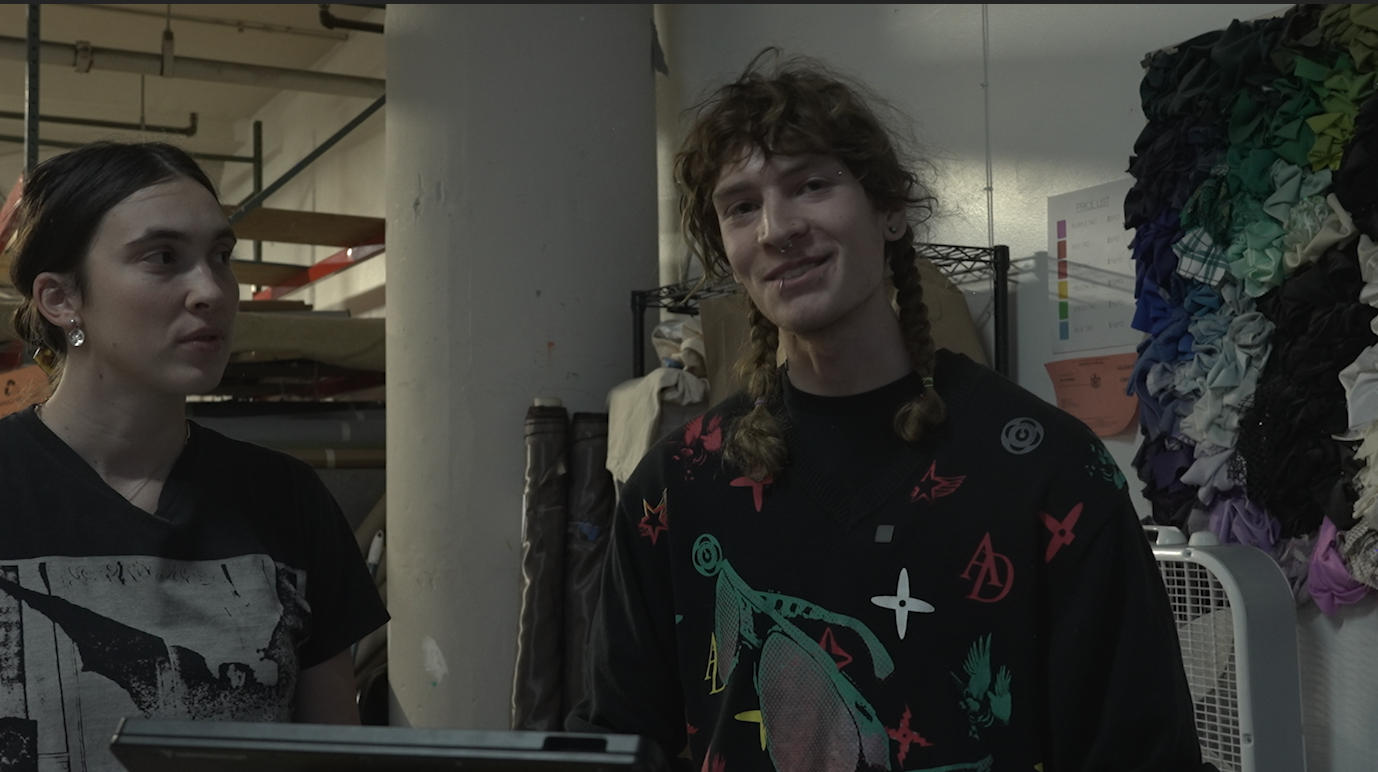
Joshua Hildreth on the right.
Hildreth joined FabScrap as a full-time employee in 2019. It is one of the biggest textile reuse service providers and NGOs in New York. It managed to survive after the pandemic, but its office and warehouse moved from Manhattan to Brooklyn.
Open its official website, and the first pop-up slogan on the front page is “We’ve raised USD 36,424 towards our goal of USD 50,000 for this year. Can you contribute USD 10 to help us get there?!” Today is December 13th, 2023, 18 days before the New Year of 2024.
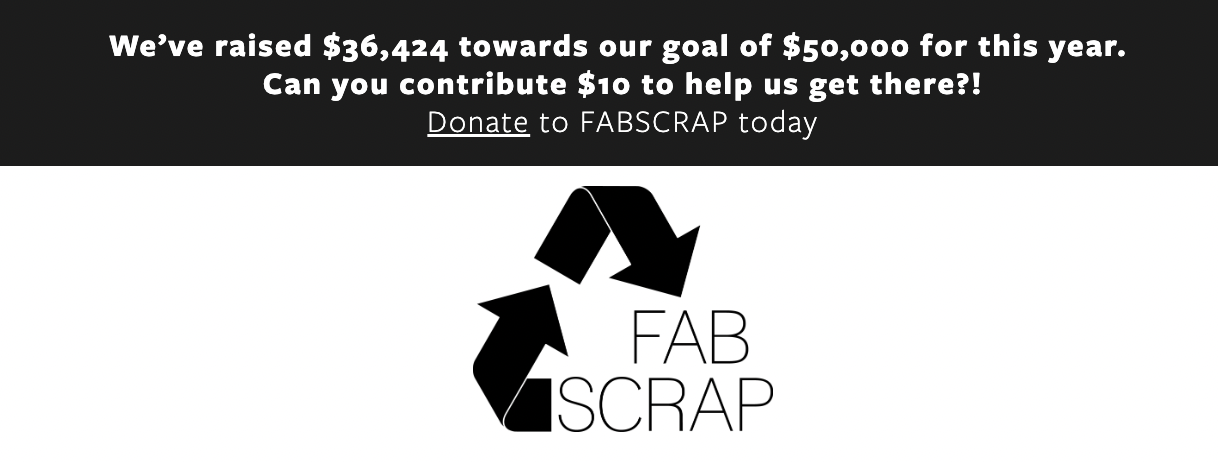
The Pop-up slogan of FABSCRAP’s Website.
A tight budget is an issue that most NGOs have to face, even if they are working on hot, popular issues like climate change. FabScrap’s sorting work is largely dependent on volunteer sorters. According to Hildreth, they receive more than 7,000 packs of fabric waste per week, and the weekly processing rate is almost 1,000 packs. The processing speed is much slower than the receiving speed.
This creates another problem; they need more space to store fabrics. At the same time, an estimated 900 fashion companies are headquartered in New York City, which is also home to more than 75 major fashion trade shows and thousands of showrooms.
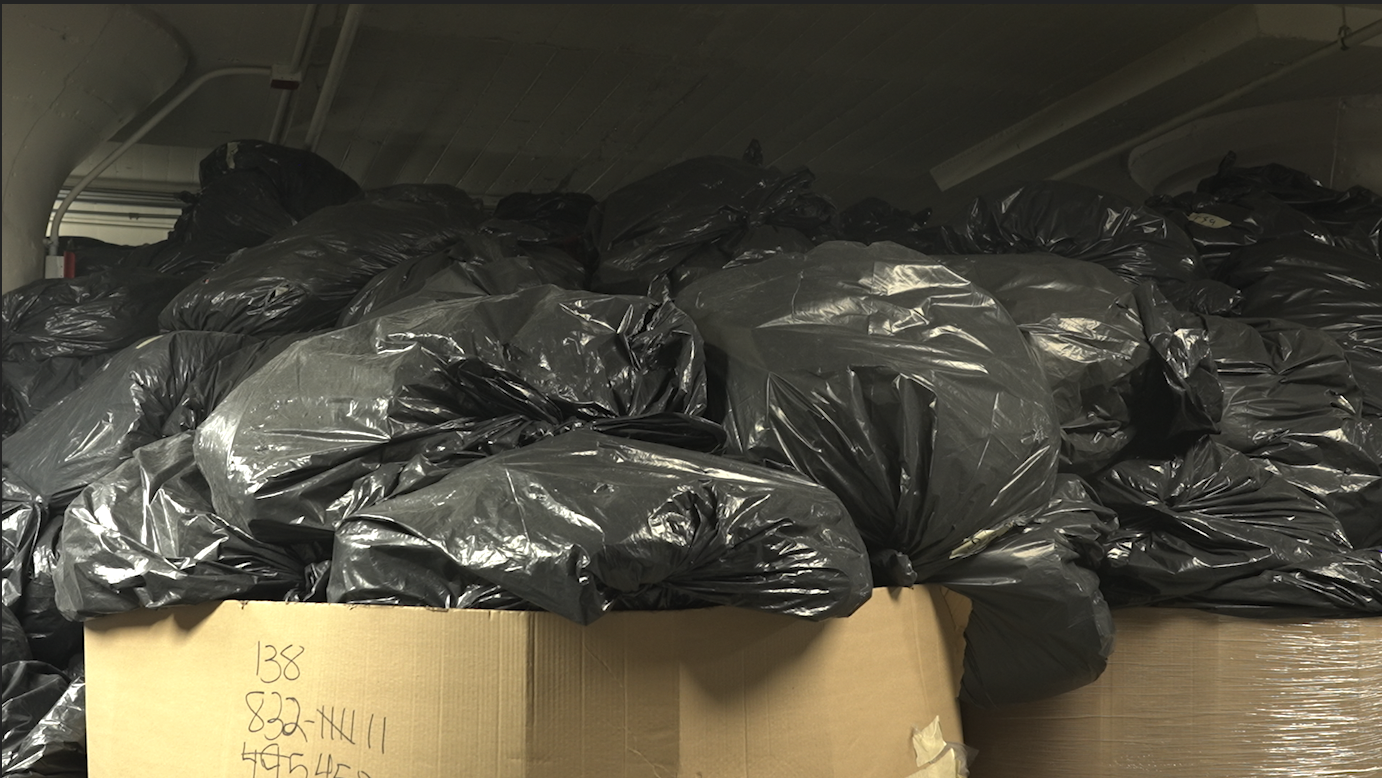
The bag packs almost reach rooftop of the warehouse.
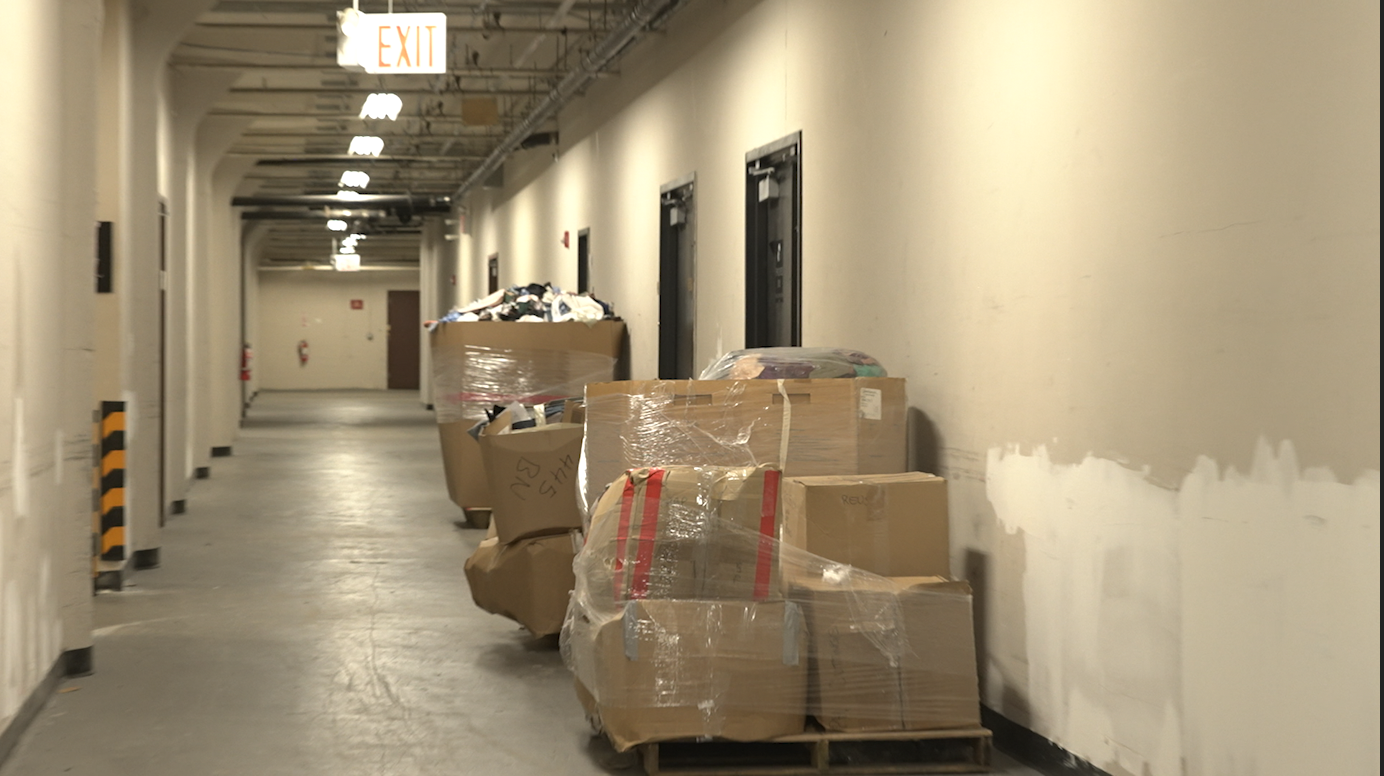
The fabric box waiting to be sort out.
There are 1,195 environmental organizations in the greater New York City metro area, including the cities of New York, Jersey City, Lakewood, Newark, New Brunswick, and White Plains. Combined, these New York City metro environmental organizations employ 9,935 people, earn more than $1 billion in revenue each year, and have assets of $4 billion.
That’s the promising big picture. Look closely, and you’ll see another story. The environmental NGO hiring is driven by large organizations: The National Audubon Society, Environmental Defense Fund (EDF), and Natural Resources Defense Council are the top three, with 985, 901, and 848 employees, respectively. By the fourth-place organization, it drops to 334 employees. In total, in New York, 119 registered NGOs have no employees, and 108 have only 1-10 employees.
“Yes, we have a lot of things on hand. We would love to hire more people, but as employers, we have limitations on our capacity at the moment,” said Rebecca Pryor, the executive director at Guardians of Flushing Bay. She is one of the only two employees of the NGO.
Much of the daily work of guardians of Flushing Bay is done with volunteers; Cody Herrmann is a longtime volunteer. Together, they have conducted over 20 walking tours and are preparing to protest a proposed casino near Flushing Bay.
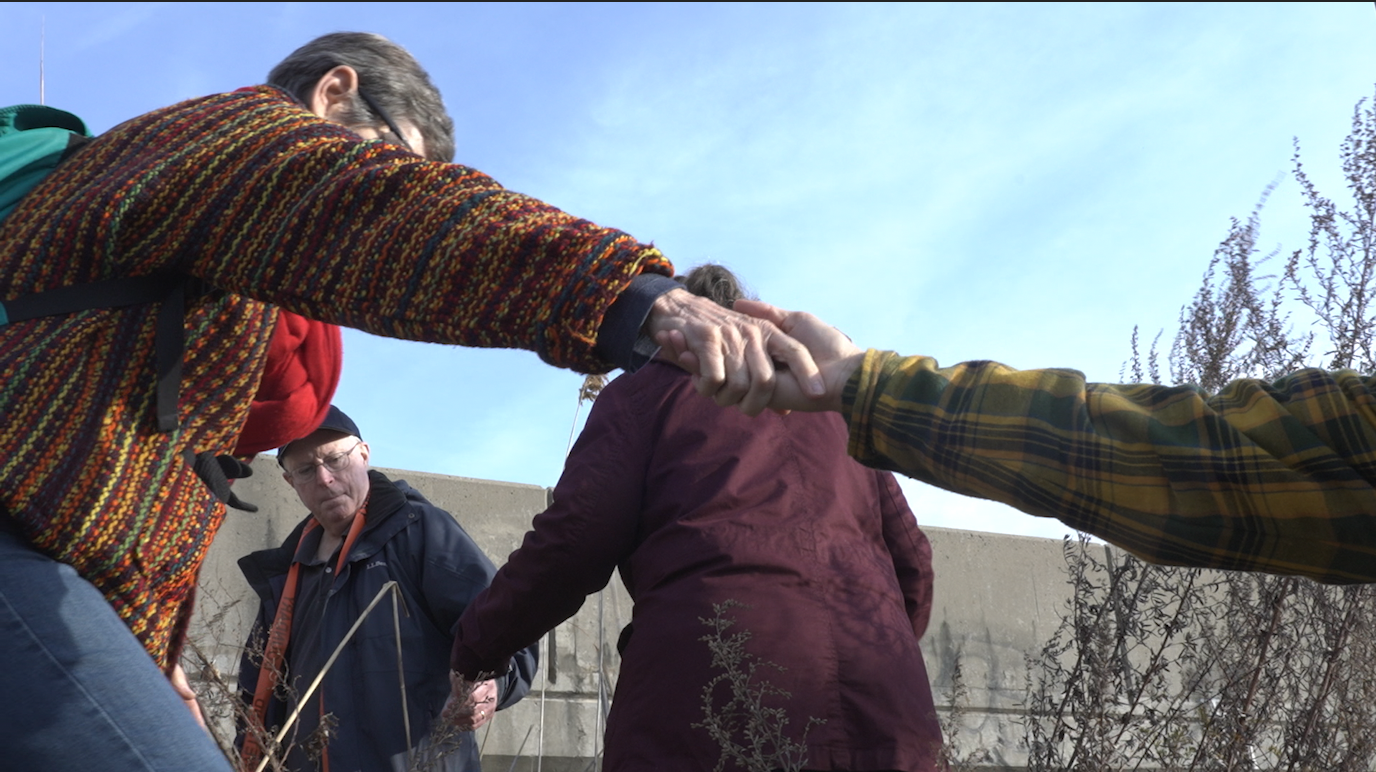
People are helping each other on the walk tour.
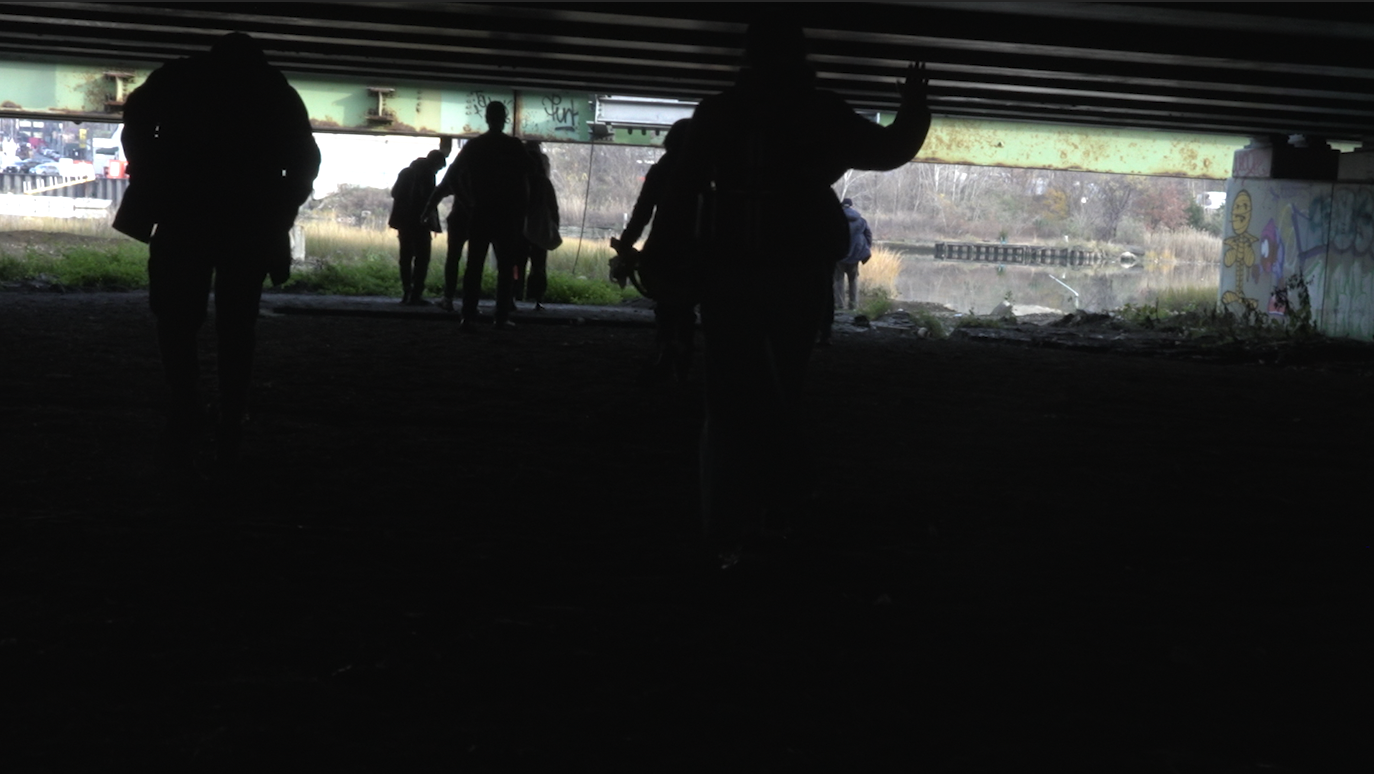
They are walking under the bridge of Flushing Greek to access the wetland.
“Yes, my work is definitely volunteer in nature. I would like to be paid for it.” She became a full-time employee of another environmental NGO. It took Herrmann about ten years to turn her passion for climate change into a steady source of income. Before her job offer, she volunteered for the organization’s programs.
Herrmann is a seasoned environmental volunteer. Her sense of purpose came to her as a teenager. She joined Greenpeace as a volunteer when she was 16.
This is a very typical career path for environmental NGO workers. Get interested in changing the world, volunteer, and then wait for an opportunity to join.
Another volunteer on the tour, Ryan Chan, hesitated about his future career. He is an environmental studies student. Like Herrmann, Flushing is his birthplace. “I like what I’m doing now. The only problem is that I wish I could get paid sometimes.” He is in the thesis phase of his college degree and will not be looking for a job in the NGO sector for the next step of his life. “It’s okay, it’s also very competitive,” Chan joked.
When Neisa Yin, another volunteer with the group as well as an NGO worker of another group, was asked if the volunteer pattern was sustainable for problem-solving, she answered firmly: “Don’t you think sustainable is a capitalist term?” She said that when the community and the environment needs volunteers, they show up, and when they don’t, they go back to their own lives.
Yin enjoyed NGO work. “My colleagues are really nice people. They do care about the world.” She doesn’t think she could handle the pressure and toxic environment of a high-paying job.
But she also admits that if it weren’t for the fact that she could live at her parent’s house, she wouldn’t be able to afford to live in New York on her salary. “My parents have a wholesale business. In the future, I may need to take of it.”
It’s the same for Herrmann; Herrmann is still living in her parents’ house despite her bachelor’s and master’s degrees. “My parents certainly want me to make more money. The funny thing is, I make as much money now as I did when I worked part-time at a nearby hospital at 19 years old. And now I am 30,” she said.
Pryor said that her NGO is bridging the gap between the government and the community. If the government really gave people what they needed, her organization wouldn’t have to exist she argued. NGOs in marginalized communities tend to raise less money but face steeper challenges.
Hildreth, the booth and accessory designer, said his work at the NGO Fabric Waste Recycling had informed his design career. He derives pleasure and fulfillment from it, despite the low pay.
“For me, it’s worth coming here every day,” Hildreth said.